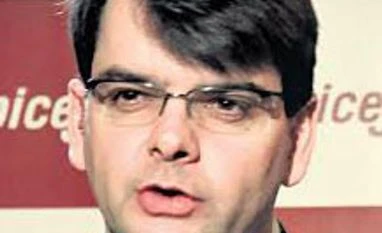The erstwhile ModiLuft, which was grounded in the mid-1990s, was resurrected in 2004 as SpiceJet, by a clutch of investors led by non-resident Indian businessman Bhupender Kansagra and Ajay Singh. They brought in a low-cost airline veteran, Mark Winders, as its CEO, to kick-start operations. Winders, however, left a year into the job – in 2005, citing “home sickness”.
Siddhanta Sharma, who was associated with the project for several years, then took charge as CEO, and later as executive chairman. In a board room with a multiple investor environment, the CEO more often played the balancing act, noted a former member of the executive management team, requesting anonymity.
Also Read
Sharma quit in July 2008 even as talks were on with potential external investors to bring in money into the business. He subsequently joined InterGlobe Enterprises, the parent company of rival carrier IndiGo.
The same month, US-based distress investor Wilbur Ross bought out the Kansagras and some other investors, pumping in Rs 345 crore into the airline. Ross brought in Sanjay Aggarwal as CEO in October 2008, who turned around the operations in 18 months.
However, a change in the management in July 2010 – with Sun TV’s Kalanithi Maran taking control – precipitated Aggarwal’s exit. He joined the beleaguered Kingfisher Airlines the same year. Maran roped in Mills in 2010, who earlier worked with low-cost carriers FlyDubai and EasyJet.
An aggressive Mills, a finance professional by training, expanded the airline’s network with introduction of smaller Bombardier Q400 aircraft that fly to tier II and III towns and cities. A blue-ocean strategy of taping new international destinations like Kabul and Guangzhou earned Mills lot of accolades. This has come at a cost. Over the past three years, the promoters have pumped in around Rs 350 crore into the airline, while its debt has jumped from Rs 650 crore in FY12 to Rs 1,429 crore in FY13.
This further added fuel to speculation among industry circles that SpiceJet promoters were looking at bringing in a foreign airline as a strategic investor. Qatar Airways and Kuwait Airways were talked about as likely suitors though there was no official confirmation from any quarters. In January this year, SpiceJet confirmed that some foreign investors had shown interest in the airline.
It’s against this background Mills resigns as the CEO.
Any strategic investor who comes in is likely to have a say in the management of the airline. Mills leaving the cockpit mid-air could very well be a precursor to a strategic sale deal.
CEOs' exits
CEOs have quit the airline before completing the full term (in some cases even before airline's launch) or have been shown the door as in case of Air India. In other cases the changes came about with the change in ownership
GoAir's first CEO Graham Williamson left the airline even before its launch in 2005
Kingfisher's first president Alex Wilcox left airline within two months of the launch in 2005
Sanjay Aggawal joined SpiceJet in 2008 following equity investment by Willbur Ross and quit after Marans took over in 2010
Air India's chief operating officer Gustav Baldauf forced to resign in 2011 after accusing government of interference. The same year government shunted Arvind Jadhav as the managing director and brought Rohit Nandan in his place
Jet Airways CEO Nikos Kardassis stepped down in June 2013 following Etihad's decision to invest in the airline. Qantas CFO Gary Toomey replaced him
)